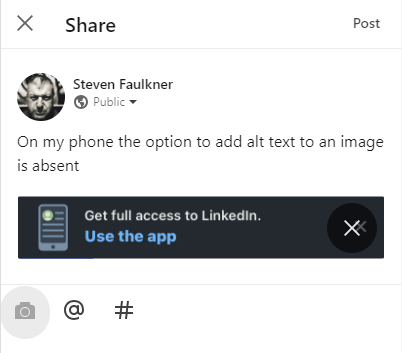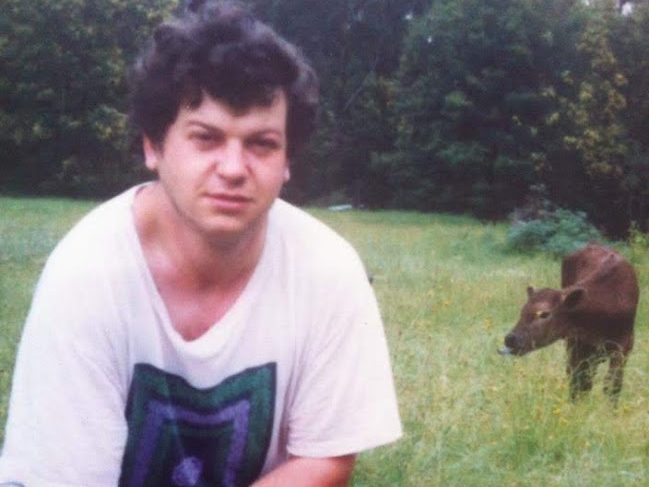
Street art by Dotmaster
Owned control
You ever get the feeling that some big corporations want you to abandon the open web, in favour of the walled gardens of their apps?
One method they use to get your asses under their control is to constantly tempt you with FOMO (fear of missing out):

You ain’t getting FULL ACCESS on your phone unless you Use the app.
coercion on occasion
I can live with this coercion on occasion, but it’s starts to grind my gears when no matter how many times you dismiss the banner it re-appears, or the banner is a permanent visual feature:

If you don’t want to be herded you have to accept a permanent loss of screen space.
I still live with this, but what really grinds my gears is the lack of basic accessibility functionality within these web sites. By all means push your claimed fuller, smarter experience but don’t undermine my ability as a user of the web to make the content I post accessible.
#A11Y 1.1.1
I continually forget what the WCAG SC numbers are, but I cannot forget 1.1.1
Open source social media provides a means to add alt text to an <img>:
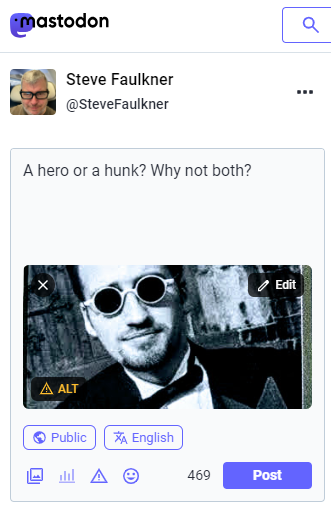
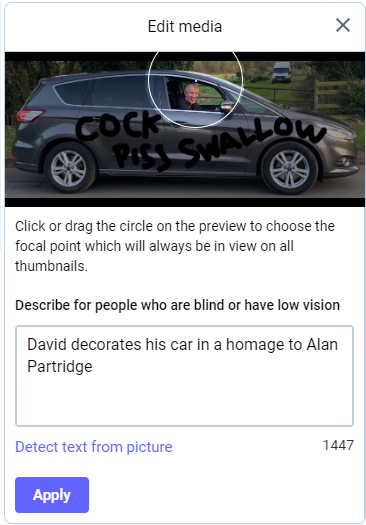
Even Fascist owned social media has a means to alt text to an <img>:
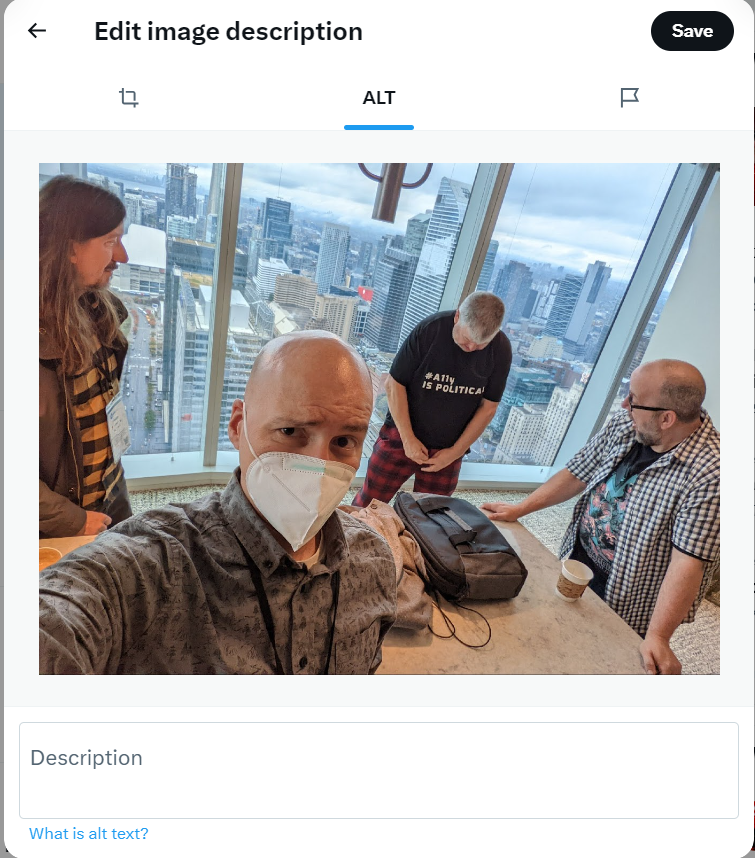
So why don’t good corporate citizens who claim to care about accessibility provide the most basic functionality to add alt text to an <img> when using their tools to author content on a phone?
